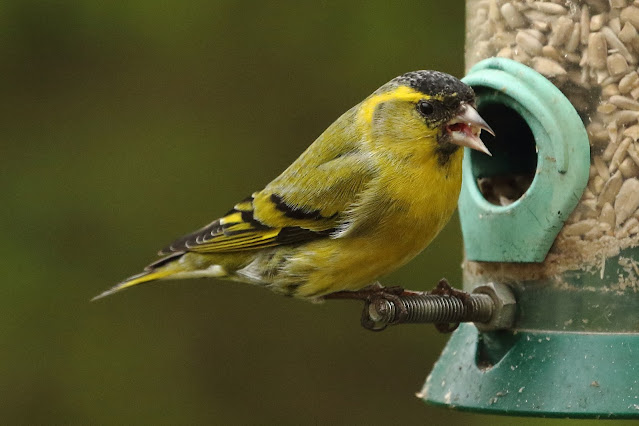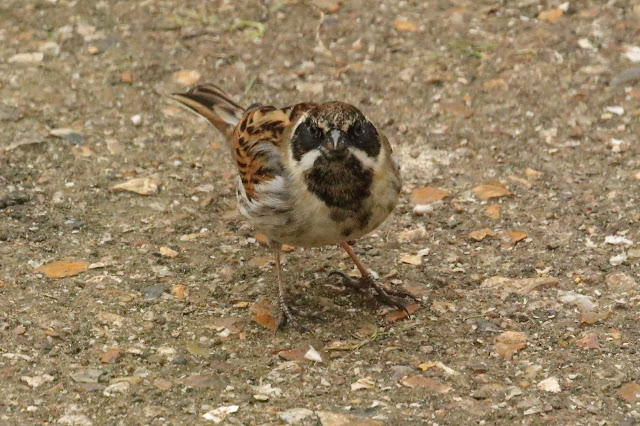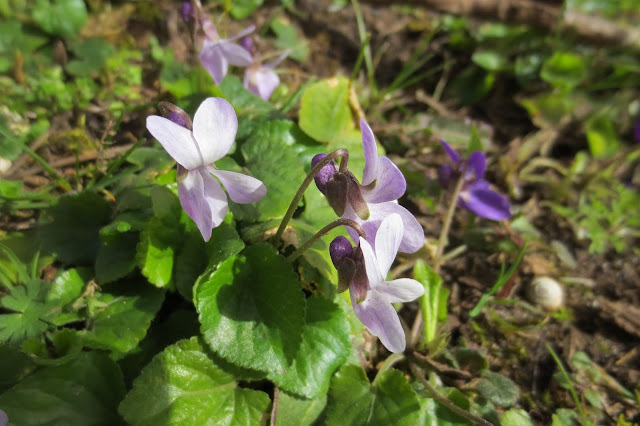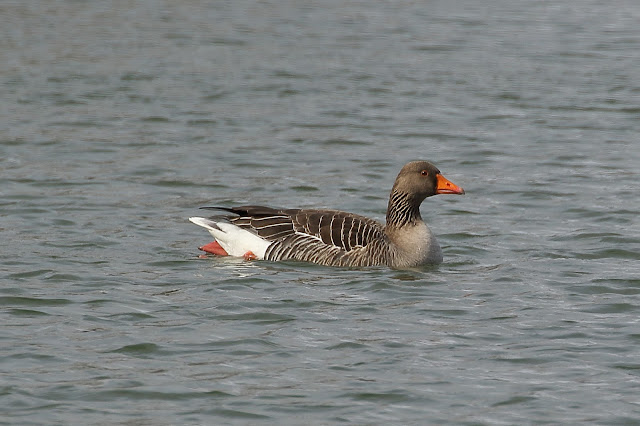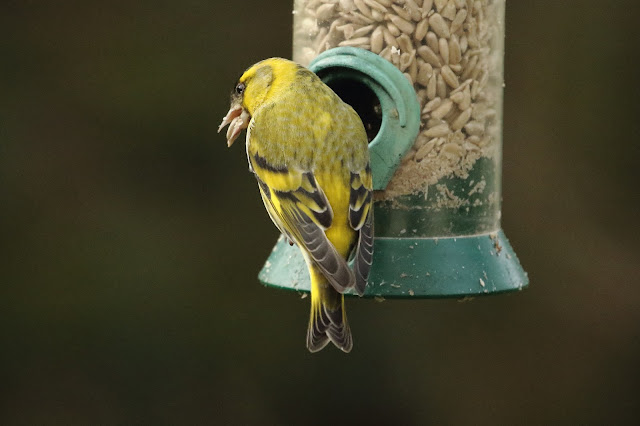A small flock of Siskin continued to visit the feeders in Andy M's garden last week, joined more occasionally by a Brambling, and on Friday they were joined by a pair of Lesser Redpoll - all three species being members of the finch family that visit the UK in winter.
Sightings and news for the Naturewatch group of Great and Little Abington in Cambridgeshire, UK. See below for more details and information on how to join.
Tuesday, 23 March 2021
A Lesser Redpoll pair - and more garden birds
A few weekend birds
David F had a welcome early morning visitor to his bird feeders this weekend - a male Great Spotted Woodpecker - the red spot at the back of the nape distinguishing it from the female.
Sweet Violets - all around the village
A spring walk around Granta Park
14th March - Andy M took the opportunity to walk around Granta Park at the weekend, when there were very few people around, and nature had the place to itself. Quietly walking through Sluice Wood, he spotted a Buzzard, intently watching and listening for any activity in the rough grass below.
Where the sun had been shining through the trees, patches of Sweet Violet, both purple and white ones, and bright sun-burst Celandine were coming into flower, particularly alongside the river near the old footbridge. And around the buildings the Daffodils were also giving a fine display.
Near the lake, a pair of Mute Swan were 'up-ending' to get at the weed, but soon spotted Andy and headed across, in hope of some bread no-doubt. The Canada Goose and Greylag Goose were more reticent, keeping their distance, as did the Grey Heron. Finally, as Andy walked back across the rough ground near the new lakes, a group of Meadow Pipit and Pied Wagtail were feeding, continually dashing and stopping in search of insects.
Pied Wagtail flocks on Perse fields
13th March. Over the last week or so, on his regular walks, David F has been seeing good sized flocks of up to 40 Pied Wagtail feeding on the Perse sports fields. Today he managed to get close enough to take a photo. He also took the opportunity to record a few of the other birds feeding there:
Monday, 22 March 2021
Brambling and Siskin - and other colourful garden birds
10th March - like many, Andy M has been working from home during lockdown, and is lucky enough to have a good view of the birds coming and going in his garden.
Despite the somewhat drab weather, a colourful selection of birds were seen during the week, including a male Brambling - a more unusual finch that visits the UK during the winter. In this case, it appeared to be part of a mixed flock of mainly Chaffinch under the feeders. The male Brambling is similar to a Chaffinch, but has a streaked brown back, and a characteristic rufous-orange shoulder patch. The grey head, sometimes has the first patchy signs of the black head of its summer plumage showing through.
Another winter finch, the Siskin, has also started appearing on feeders in increasing numbers across the village in the last week or two. The male Siskin is a small, but strikingly-coloured finch, with a smart black cap, bright yellow-green cheeks and rump, a green streaked back, contrasting black and yellow wing pattern, and an obviously forked tail.
A pair of Red-legged Partridge also appeared under the feeders, along with a pair of male Reed Bunting, both being unusual visitors to Andy's garden.
The Aims of Abington Naturewatch
At their meeting on 9 April 2005 the members approved this revised version of the aims of Abington Naturewatch:
- To monitor and record the wildlife (fauna & flora) within the borders of the Abingtons;
- To encourage protection of our wildlife, maintain its quality and foster its diversity;
- To promote awareness of the richness, potential and problems of the natural environment of the Abingtons;
- To cooperate in improving access to the local natural environment for the benefit of all Abington villagers.
The organisation is informal and communication is by email if possible; members are notified of events from time to time. Contact details are maintained by a small "project team". There is currently no membership fee as costs are covered by voluntary contributions at events.
Members are encouraged to report notable sightings of flora and fauna within the Abingtons to the appropriate sector coordinator and an illustrated record is published annually.
A map of the area covered, with some features noted, is available here: http://maps.google.co.uk/maps/ms?ie=UTF8&hl=en&msa=0&msid=213774935674882866424.00000111dca2be9f06ab8&z=13>
For more information or to join, please contact David Farrant on (01223) 892871.
Contributions to our records should be sent to sector contacts or either of the above. Photographs may also be submitted to Andy Merryweather (amerryweather61@gmail.com)





